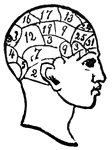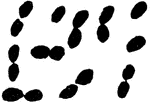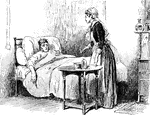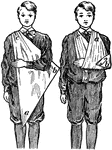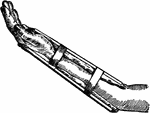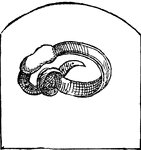The Medicine ClipArt gallery offers 118 images of medical terms and tools, including bandage application, harmful germs, medicine, and more. Please note that many of these images of medical procedures and practices are out of date and may no longer be recommended practices. Illustrations of older medical practices are made available solely for their historic interest.
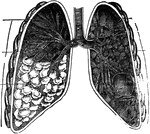
Lung with Tuberculosis
Lung infected with consumption (tuberculosis), showing the intervesicular changes).

Medicinal Leech
The medicinal leech is a leech used in bloodletting. It lives in fresh water, and is common in Germany,…
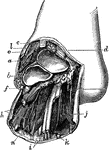
Chopart's Amputation at the Mediotarsal Joint
Chopart's operation is is an amputation at the mediotarsal joint. Labels: a, astragalus; b, os calcis;…
Nerve Ganglia (Spinal)
Nerve Ganglia, or Knots (sing. Ganglion; Knot) occur as collections of nerve cells on the course of…
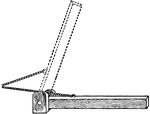
Oblique Pull
"It is worthy of note that, owing to the oblique direction in which the muscles are commonly inserted…
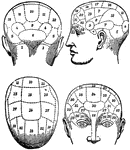
Phrenology
The term applied to the psychological theories of Gall and Spurzheim, founded upon 1, the discovery…
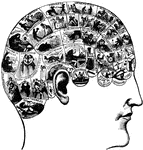
Phrenology
A theory which claims to be able to determine character, personality traits, and criminality on the…
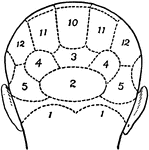
Phrenology
Phrenology is a psychological theory that the shape and bumps on a person's head can tell what mental…
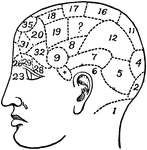
Phrenology
Phrenology is a psychological theory that the shape and bumps on a person's head can tell what mental…
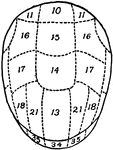
Phrenology
Phrenology is a psychological theory that the shape and bumps on a person's head can tell what mental…
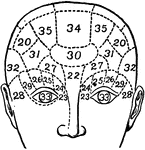
Phrenology
Phrenology is a psychological theory that the shape and bumps on a person's head can tell what mental…
Broadleaf Plantain - Spike
Plantago major. "...a flower cluster or form of inflorescence in which the flowers are sessile (or apparently…
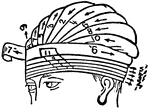
Recurrent Bandage
Applied to various parts. To adjust it to the head make several turns around the head, then pass the…
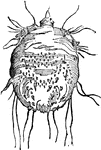
Scabies
A disease caused by a minute insect, the acarus scabiei, which bores into and underneath the epidermic…

Coat sling
"The bandaging will stop all ordinary bleeding. Generally this is all that is necessary for the first…

Sleeve sling
"The bandaging will stop all ordinary bleeding. Generally this is all that is necessary for the first…

Spiral Bandage
Applied to parts which do not vary in circumference. It is applied like the oblique except that the…

Splint
"When an arm or a leg is broken, it should be kept stretched out straight so that the sharp, broken…

Splint
"No one but a good surgeon is able to set a broken bone successfully. However, if a person with a fracture…

Temporary splint
"Showing how a pillow, an inside coat, a "sweater", or a blanket may be used as a temporary splint on…

Leg splints
"Fracture of the leg: Apply two splints, one on the outside, the other on the inside of the limb. When…
Leg splints
"Fracture of the leg: Apply two splints, one on the outside, the other on the inside of the limb. When…

Stomach Pump
"It consists of a common metallic syringe, A, screwed to a cylindrical valve box, B, which contains…

Subclavian compression
"In bleeding from wounds of the shoulder or armpit the subclavian artery may be reached by pressing…
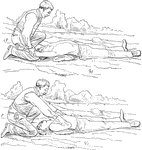
Treatment of Suffocation
Showing position for inspiration (top) and position for expiration (bottom).

Syringe
A syringe is a simple piston pump consisting of a plunger that fits tightly in a tube. The plunger can…

Lisfranc's Amputation at the Tarsometatarsal Joint
Lifrac's operation consists in amputation through the tarsometatarsal line of joints. Labels: a, b,…
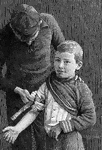
Tourniquet
"Showing how an improvised apparatus, or temporary tourniquet, may be adapted to arrest bleeding from…
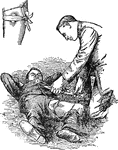
Tourniquet
"The principal of a tourniquet is easily understood, a pad or compass placed on the line of the artery…
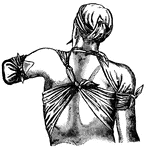
Triangular Bandage
This illustration shows a method of applying a triangular bandage to the chest, shoulder, head and elbow.

Trichina in Muscle
Trichina parasitic worms, as sometimes found in the muscles of a person who has eaten pork not well…
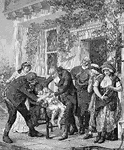
The First Vaccination
"This picture is based upon a photograph of a painting exhibited many years ago in the Paris Salon.…













